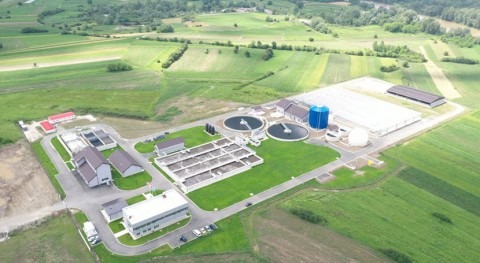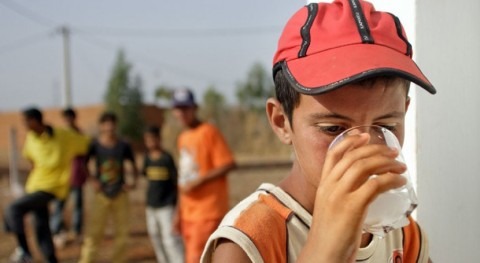The discharging of wastewater and too many nutrients has degraded the Palić and Ludaš lakes. KfW is promoting the renaturation of the two lakes on behalf of the German Federal Government with a total of EUR 7.8 million. In future, wastewater from the neighbouring settlements will be treated before discharge. The first successes are already visible: noble fish such as the zander are swimming again in the two lakes, which are to become a recreational area again.
Older residents still remember that Lake Palić and Lake Ludaš were popular tourist destinations. The two nationally known lakes are designated as recreational areas and are located in a large nature reserve halfway between Belgrade and Budapest, so they are easy to reach. But in recent years the waters have suffered from a heavy input of pesticides and nutrients from agriculture as well as pollution from sewage. In the village of Palić on the lake of the same name, only 40 % of the approximately 2,500 households had a sewer connection, and some of their sewage flowed untreated into the lakes. Most houses only had septic tanks.
Dangerous blue-green algae
The former excursion destinations became unsightly. In summer, thick carpets of algae floated on the lakes, proliferating due to over-fertilisation. High concentrations of blue-green algae can be dangerous for bathers. The poor water quality threatened the biodiversity in the waters. Instead of the native fish species, a rather insensitive carp species, the silver crucian carp, spread in large numbers. It recently accounted for up to 96 % of the fish biomass in the two lakes.
Modernisation of the sewage treatment plant
On behalf of the German Federal Ministry for Economic Cooperation and Development (BMZ), KfW is supporting the renaturation of the two lakes and modern sewage disposal with a grant of EUR 6.5 million and a loan of EUR 1.3 million. The sewage treatment plant, which dates back to 2009, has sufficient capacity to connect more households, but first had to be modernised in order to significantly reduce the discharge of phosphates into the two lakes. In addition, more than 600 households from Palić were connected to the sewerage system financed from the project funds. Their wastewater is now also treated in the sewage treatment plant.
Renaturation of the lake
But this is not enough to sustainably protect the biodiversity in and around the lake. Therefore, a buffer zone is being created around the lake. Directly adjacent agricultural land is being expropriated in exchange for compensation in order to renaturalise the lake shore through near-natural planting. It is not too late: rare animal species still live here, such as the moor duck or the white-headed duck. An endangered plant species, namely the green milk star (Ornithogalum boucheanum), has also been detected and has once again raised the environmental status of the lake. The non-native silver crucian carp is currently being fished on a large scale. Suitable mesh sizes in the fishing nets ensure that other fish species remain in the lake. The amount of crucian carp caught even exceeded the expectations of the experts from the nature park administration. Subsequently, native species, such as zander, are to be set. They can reproduce there as soon as the water quality improves. The nature park administration is receiving support from a complementary measure of the project to expand its capacities and performance so that it can manage the recreation area sustainably.
Popular excursion destination
In future, cycle paths will provide access to the two lakes. Viewing platforms make it easier to observe the more than 200 resident bird species. The area is known beyond the region and has been used for tourism for 160 years. The village of Palić attracts visitors with its historical buildings. It is expected that more travellers will soon stay overnight in the area to discover the lakes, which are now attractive again. The neighbouring communities will also benefit from this.
The project supports the implementation of the EU acquis in the environmental sector (wastewater, water protection, biodiversity) and improves the tourism potential of the region in line with the Sustainable Development Goals of the United Nations Agenda 2030 with SDG targets 6 (water and sanitation) and 15 (protect ecosystems and halt biodiversity loss).
However, to make sure that the renaturalised area and the restored quality of the environment and nature are preserved in the long term, educational measures are also required, especially among the younger generation. Here, too, the project was able to make an outstanding contribution: at an international festival to raise awareness for sustainable water protection, the topic, imaginatively presented in the form of a 21st century eco-fairy tale for children and adults, won first prize - highly recommended for imitation!









